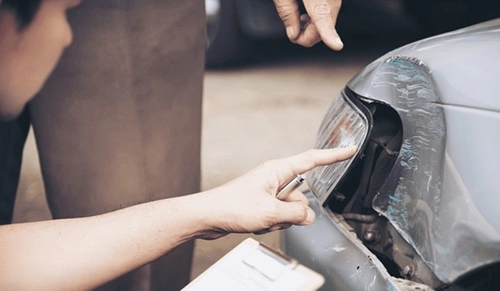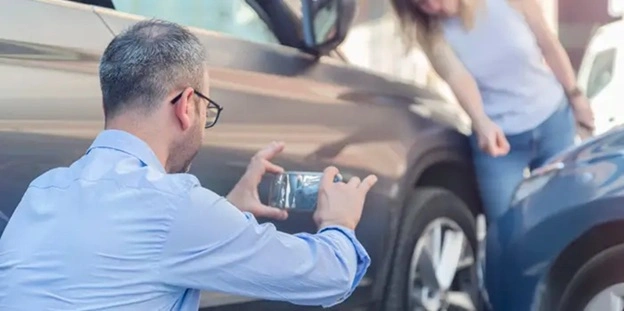Filing an insurance claim in the automotive industry after an accident is a very complex and frustrating process. Understanding the key phases of claim settlement can help you navigate this process more effectively and set realistic expectations for resolution timeframes.

In this article, we will be learning about the steps involved in raising along with settling an auto insurance claim in the automotive industry.
Step 1: Preparing and submitting a demand letter
The demand letter is the most fundamental component of the car insurance claim process. This is the document that formally outlines the details of your claim and also serves as the starting point for settlement negotiations in all situations.
What to include in your demand letter
A comprehensive demand letter should include:
- Details of any injuries sustained
- Evidence documenting damage to your vehicle
- Documentation of other losses resulting from the accident
- A specific compensation amount you’re requesting

The amount you demand will depend on several factors, including injury severity, medical costs incurred, vehicle damage extent, and any other losses you have suffered. If you are working with a lawyer, they will likely use previous verdicts or settlements in similar cases as references to determine an appropriate demand amount.
Setting appropriate expectations
Your demand letter helps for the claims settlement process. The insurance company’s response time may vary based on several factors:
- Company Size: Larger insurance companies with more resources may respond more quickly, while smaller companies with limited staff might take longer to process your claim.
- Claim Complexity: More complex claims naturally take longer to evaluate.
- Response Deadlines: Your demand letter should include a deadline for the insurance company’s response, though this isn’t always binding.
It’s generally advisable that you set your demand amount at the start, because of which there is a great scope for negotiation between you and the insurance company.
Step 2: Evidence collection and verification
After receiving your demand letter, the insurance company will request evidence to verify and evaluate your claim. This evidence collection phase is critical to the settlement process but can also many times extend the timeline in a great manner.

Types of Evidence Required
Insurance companies typically request:
- Accident Reports: Official police documentation of the incident
- Medical Records: Documentation of injuries and treatments
- Witness Statements: Testimonials from people who saw the accident
- Vehicle Condition Reports: Assessment of vehicle damage
- Proof of Expenses: Bills, receipts, and documentation of costs that have been faced
The vehicle inspection process
One of the most important aspects of evidence collection is documenting your vehicle’s condition. Traditionally, insurance companies deploy surveyors to manually inspect damaged vehicles, which helps to document each issue in detail for the insurer’s benefit.
This manual inspection approach has significant drawbacks:
- it takes a lot of time, often taking weeks to complete
- Scheduling depends on surveyor availability, which can cause delays
- The process lacks standardization, as different surveyors may assess damage differently
Modern solutions for vehicle inspection
To address these inefficiencies, many companies are now including AI-powered damage detection tools like Inspektlabs.These innovations are now helping to offer many advantages:
- Remote Inspection Capability: Anyone can document vehicle damage from their location
- Rapid Results: Detailed damage reports generated within seconds rather than weeks
- Consistency: AI evaluations follow standardized assessment criteria
- Transparency: Clear documentation reduces disputes about the damage extent
- Fraud Prevention: Advanced algorithms help identify potentially fraudulent claims
By making this process of the vehicle inspection process, these technologies significantly have reduced the time taken and also significantly improved accuracy and customer satisfaction.
Documenting Injuries and Treatments
If you’ve sustained injuries in the accident, thorough documentation is essential for fair compensation. Be sure to:
- Seek proper medical treatment immediately
- Keep records of all medical visits and procedures
- Maintain copies of all medical bills and prescriptions
- Document how injuries affect your daily life
- Follow through with all recommended treatments
Complete and organized evidence strengthens your position during the settlement process and helps ensure fair compensation for your losses.
Step 3: Negotiation and Settlement
After the insurance company reviews your demand letter and examines all the evidence you’ve provided, they’ll make their first settlement offer. This part of the process typically involves some back-and-forth as both the parties are co work toward an agreement that resolves the claim.

Understanding the Initial Offer
Most insurance companies start by offering the lowest amount they think you might possibly accept. This is simply how the negotiation game works – their first offer rarely represents the most they’re willing to pay.
When you get an offer that is lower, don’t let it discourage you. Remember, this is just the beginning of the negotiation process, not the end.It can definitely be negotiated further.
Effective Negotiation Strategies
You can strengthen your position during negotiations by:
- Keeping detailed notes whenever you speak with insurance representatives
- Getting all settlement offers in writing instead of accepting verbal promises
- Drawing attention to the most substantial evidence that supports your claim amount
- Consistently pointing to your actual expenses and financial losses with documentation
- Staying persistent without becoming confrontational – patience often pays off
When Legal Help Makes Sense
Sometimes, negotiations hit a wall, or the insurance company simply refuses to make a reasonable offer. In these situations, talking to an attorney might be your best next step.
A lawyer with experience in auto claims can:
- Look at your accident circumstances and tell you if the offers are fair
- Give you a realistic idea of what your claim is actually worth
- Take over the hassle of dealing with the insurance company
- Often, this moves the negotiation process along faster
- Help you prepare for a lawsuit if that becomes necessary
Finalizing Your Settlement
When you finally reach a settlement you can accept, make sure to:
- Get the complete offer in writing before agreeing to anything
- Obtain a properly signed contract that spells out all the terms
- Check that the paperwork clearly states which damages and injuries are covered
- Confirm exactly when and how you’ll receive payment
Never rely on verbal promises about your settlement. Without proper written documentation, disputes can easily arise later about what was actually agreed upon.
How Long Until Settlement?
There’s no single answer to how long your claim might take. The timeline depends on several key factors.
Typical Time Frames
- Insurance companies usually have about a month (30 days) to investigate after you submit a claim
- Straightforward claims with minor damage might wrap up in just a week or two
- Claims involving serious injuries or major damage often take several months
- When multiple vehicles are involved, or fault is disputed, expect even longer timeframes
What Affects Your Timeline
Factors that can significantly increase or decrease the speed of your settlement:
- How quickly you file your claim after the accident (sooner is definitely better)
- The intensity of the accident and resulting injuries or damage
- Whether you’ve provided all necessary documentation promptly
- The insurance company’s current workload (especially after major weather events)
- Whether they’re using traditional inspection methods or newer AI-powered systems
Keeping Track of Your Claim
The insurance company will provide you with a claim number when you first file. This number is your key to:
- Checking your claim status as it progresses
- Providing any additional information they request
- Speaking with representatives about your case
- Maintaining your own records of the entire process helps significantly
Final Thoughts
Getting through the auto insurance claim process requires some patience along with good organizational skills. Understanding the three main stages of the claims settlement process—submitting your demand letter, providing evidence, and negotiating the settlement—helps you navigate the process more effectively.
New technologies, particularly AI-powered vehicle inspection systems, are improving parts of this process in a significant manner. So, instead of waiting for a long time to do traditional inspections, these systems can sometimes deliver results in a matter of hours, speeding up the entire claim timeline.
Whatever type of accident you’re dealing with, knowing what to expect at each stage puts you in a stronger position to get the compensation you deserve. Stay organized, be persistent, and make sure you have proper documentation every step of the way.

